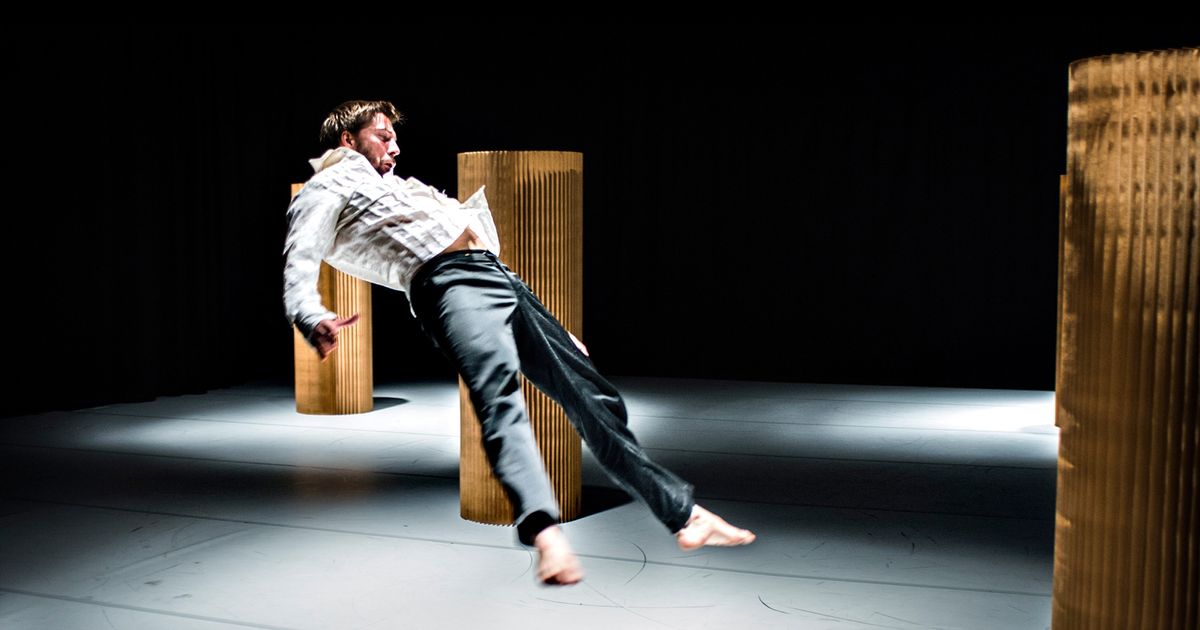– I had no choice but to close, says choreographer Ina Christel Johannessen.
For 25 years, she has been artistic director of the internationally renowned dance company Zero Visibility Corp, which has performed on renowned stages in countries including Canada, Australia, Germany and France. But two years ago, there was a knock at the door.
This is because the money for arts support – the Norwegian Cultural Council’s support program for free performing arts businesses – has run out. Over a period of four years, selected companies receive around three million NOK per year with the aim of ensuring predictability and peace of mind at work. From 2009 to 2018, Zero Visibility Corp was part of the system.
– We have performed on large international stages, where there have been up to 1,000 spectators every night, and more than 70 dancers have been associated with Zero Visibility Corp, but now everything has collapsed because the basic funding disappeared, Johannessen said.
Today, Johannessen works mainly as a choreographer in international institutional theaters.
Deferred arrangement
The government, led by Culture Minister Lubna Jaffery (Ap), has long promised that a separate support program would be put in place for established performing arts companies. It was suggested that this project be included in the state budget for 2023, but it was later postponed.
In 2018, two companies were saved thanks to a political decision that ensured them a permanent place in the state budget: Verdensteatret and Jo Strømgren Kompani. Corporations with zero visibility were not so lucky.
Today, many in the free performing arts sector are eagerly wondering whether the next national budget, which will be presented next Friday, will include a new program for established companies. They want a predictable support program capable of providing a secure financial framework for theater and dance companies that are not part of major institutions.
I’ve been waiting for six years
– There has been a downsizing of the sector, says Hege Knarvik Sande, director of the Dance and Theater Center, an organization that works to promote free professional performing arts in Norway.
Sande says several companies have been left without predictable support since losing artist support in 2018 and mentions well-known players such as Winter Guest, Goksøyr & Martens, Ingun Bjørnsgaard Prosjekt, Tori Wrånes and Verk Produksjoner.
Morten Traavik’s company Traavik.info was the last to leave the program in 2022.
According to Sande, the fact that several central companies have lost their support for art in recent years has led to a weakening of art, administrative skills, workplaces, audience building and international networks.
– We’ve been waiting six years for a new program and we’ve received far too little information about when it will be implemented and what the facility will look like, she said.
Fragile structures
It is time that established entertainment companies are now given priority, Sande believes.
“Now everything has collapsed because the core funding has disappeared.»
— Ina Christel Johannessen, choreographer
– Basically, these are jobs in the free domain, and we are talking about companies that have shown that they can make a living from their artistic talent.
– Are there other support schemes that those in the performing arts field can apply to?
– The problem is that these financing structures are so fragile. Support is largely provided in the form of project financing, which in reality means that companies have to live from day to day.
This makes it difficult for industries to develop, Sande believes.
– As a result, there is no basis for ensuring safe, long-term working conditions for performing artists and it will be difficult, for example, to hire staff on a permanent basis, she says.
– What expectations do you have regarding the next state budget?
– We cannot tolerate any more delays now, and I think the government is now launching a new program, but I fear there is not enough money, says Sande.
Wants the long term
Creating stage art means starting a large apparatus, explains choreographer Ina Christel Johannessen.
– To build this, long-term financing is necessary. Now I find myself with a vast network and a lot of expertise that I don’t know what to use.
– Lots of crazy wishes
In an email to Klassekampen, Minister of Culture Lubna Jaffery (Ap) writes that the delays in the work to establish a new arrangement for the area of free performing arts are due to the fact that it is of a “vast and unequal domain”. .
“There are many different wants and needs on the land itself. In order to create a sustainable arrangement that is resilient, time had to be devoted to it,” Jaffery writes.
She adds that it will only be when the national budget is presented on October 6 that we will know if a new arrangement will be put in place next year.
– Will the program cover a handful of individual businesses or is it intended to reach a larger number of people?
“We made it known externally that we wanted to create an arrangement that would encompass the group of performing arts players who have a long lead time,” Jaffery writes.
– Several players in the field believe they have received far too little information from you along the way?
“We have had a dialogue with field organizations as well as many individual stakeholders during the work. It is true that we have not communicated what the project will ultimately look like, simply because there has been a continuous development work based, among other things, on the feedback we received throughout the process,” explains the Minister of Culture in the email. .

“Passionate pop cultureaholic. Proud bacon trailblazer. Avid analyst. Certified reader.”







